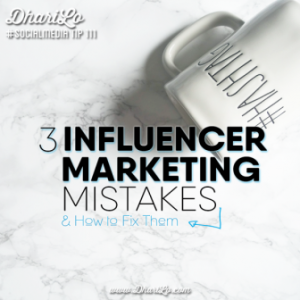Is your company’s approach to digital marketing old-fashioned?
It is if you agree with any of these statements:
- Digital marketing doesn’t produce a high ROI
- A website is all I need to optimize digital marketing
- Quantity in content is more important than quality
- Digital marketing isn’t right for me (my industry)
- My target market isn’t on digital platforms
- Digital marketing is too expensive
So, let’s break it down to see why your approach to digital marketing is old-fashioned.
Your approach to digital marketing is old-fashioned if:
You think digital marketing doesn’t provide ROI
Hubspot’s digital marketing report for 2015 shows that 3X more businesses report higher ROI from digital than traditional marketing efforts. Case studies reported by Rutgers show industry leaders (and others) gain a higher ROI on digital than traditional. In fact, Nielsen reports only 18% of TV ads generate a positive ROI, despite capturing 60% of spend.
Data shows the positive (superior) impact of digital marketing on your bottom line. Maybe more important, analytics available to monitor digital marketing efforts allow you to fine tune your marketing strategy in a way that’s impossible with traditional media. With traditional marketing, you’re pretty much operating blind.
You think a website is all you need
Sure, a website is critically important for a successful online strategy, but you need more. First, you need traffic to that site and digital marketing is a key tool for sending traffic.
SEO or search engine optimization requires a focus on digital due to changes in the algorithm Google and other search engines use to determine where you show up in search.
Digital marketing efforts also increase the reach and frequency (2 key measures of how effective marketing communications are) as prospects see your message echoed by their social graph. More important, social mentions are more influential than commercial messages (ads) because people trust their social graph more than they do your biased communications (their interpretation).
You think more content is better than quality content
If your approach to digital marketing relies on throwing spaghetti against the wall to see what sticks, you’re definitely wrong.
And, this is why you want a marketer running content rather than a journalist or English major.
Creating valuable content improves your SEO, but it also persuades visitors to close. That’s why understanding your customers (and prospects), understanding tools of influence, crafting persuasive messages, and a general understanding of marketing make a huge difference in your bottom line.
You think digital marketing isn’t right for me
I’ve heard this approach to digital marketing more times than I care to count — and it’s wrong.
Any industry can effectively use digital marketing.
- B2B firms use it for lead generation
- B2C firms use it to generate sales in stores on online
- Every business benefits from email marketing — which also requires list building
- Social advocates and evangelists amplify your message and support your brand
- Digital advertising offers better targeting, A/B testing to improve returns, and is less costly than traditional advertising
- Even firms that might find it difficult to engage customers/ prospects about their brand, can gain traction by using digital marketing to support a cause or celebrate a customer
You think your target market isn’t on digital
It’s no longer true that digital marketing only works with younger audiences. Here’s a breakdown by Business Insider of who’s buying online.
 Image courtesy of Business Insider
Image courtesy of Business Insider
Notice, there’s a slight drop off with older demographics, but there’s still substantial opportunity for digital marketing to older consumers, even those in their golden years.
In fact, the only demographic you can’t reach online is the under 13, and even lots of them are online.
Not only can you reach nearly every demographic using digital marketing, but, even when it’s hard to reach your target market, you’ll likely reach influencers. For instance, funeral homes can reach survivors who are often making choices for the deceased and adult children often influence purchases for their elderly parents. Even young kids influence their parents’ purchase decisions even if the parents aren’t engaging with a brand online.
You think digital marketing is too expensive
Digital marketing is the most cost-effective form of marketing. Period.
And, if you think you can make a business without doing some marketing, you’re wrong. Everyone needs some marketing spend or they’ll never reach their potential.
That said, digital marketing costs money. Having your nephew or daughter do digital marketing only works if they have expertise in marketing. The fact they have 500+ friends on Facebook doesn’t mean they have any clue about how digital marketing works — especially when it comes to monitoring and tweaking performance to optimize returns.
Also, beware of a number of fly-by-night agencies out there who will take your money without delivering a quality return. If you’re paying less than about $ 1000 a month, you’re with one of these agencies. Just like cheap web design or any other professional service, low price often indicates poor quality, but high price doesn’t often mean you’re getting high quality either.
Instead, read blog posts by agencies you’re considering hiring and ask yourself these questions:
- Do they show thought leadership?
- Is the agency successful with their own digital marketing?
- Is their work cited by other reputable blogs?
Also:
- look at the agency’s previous clients and get recommendations from them.
- Ask for a detailed proposal that shows some understanding of your unique needs rather than a cookie cutter approach.
- Who will handle your account — a trained marketer or someone hired by the agency with little background in marketing?
(53)









